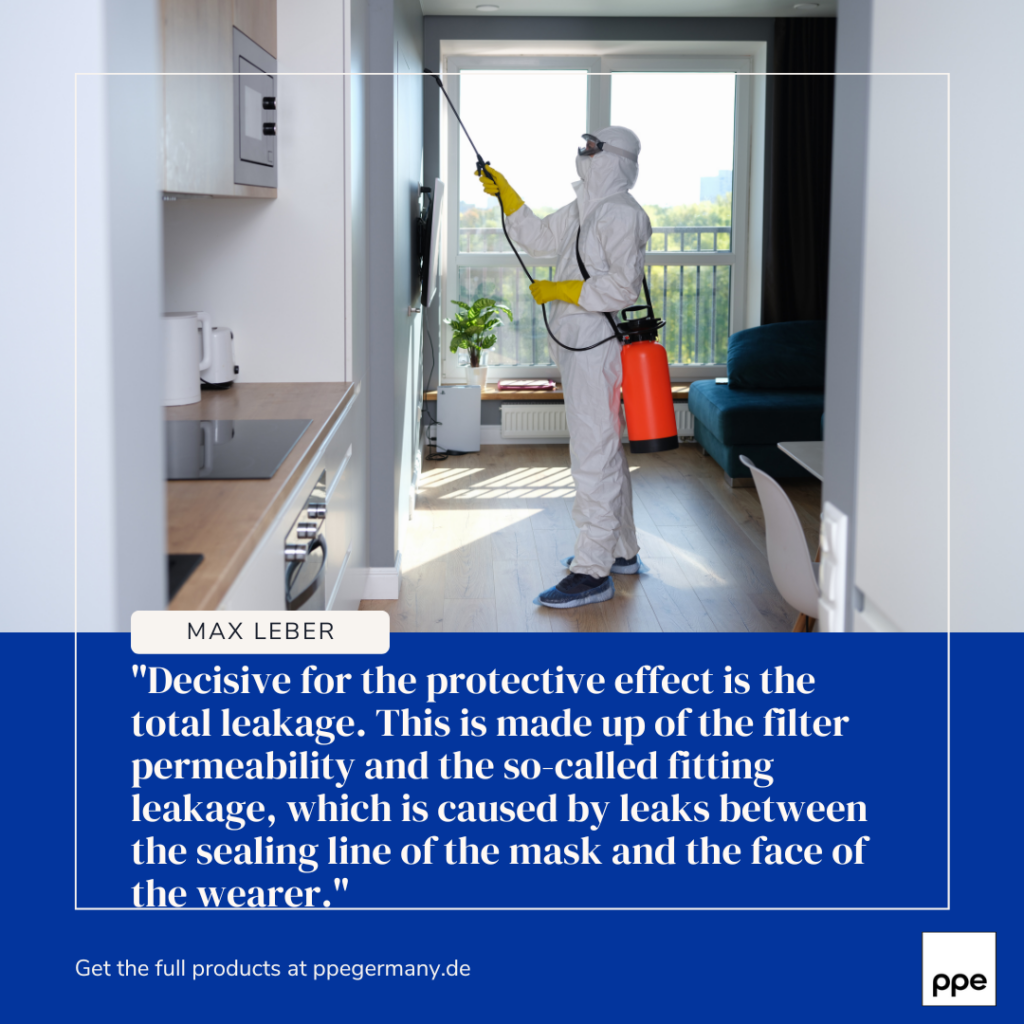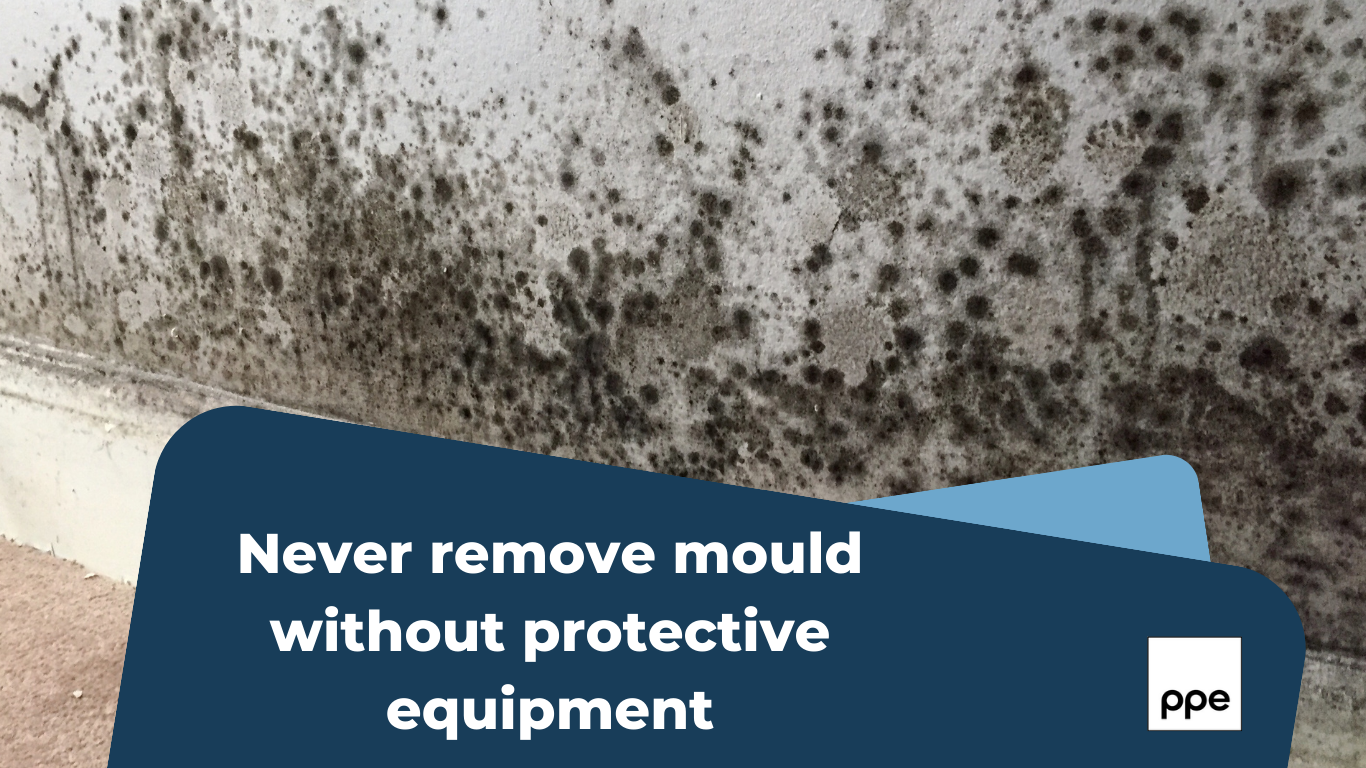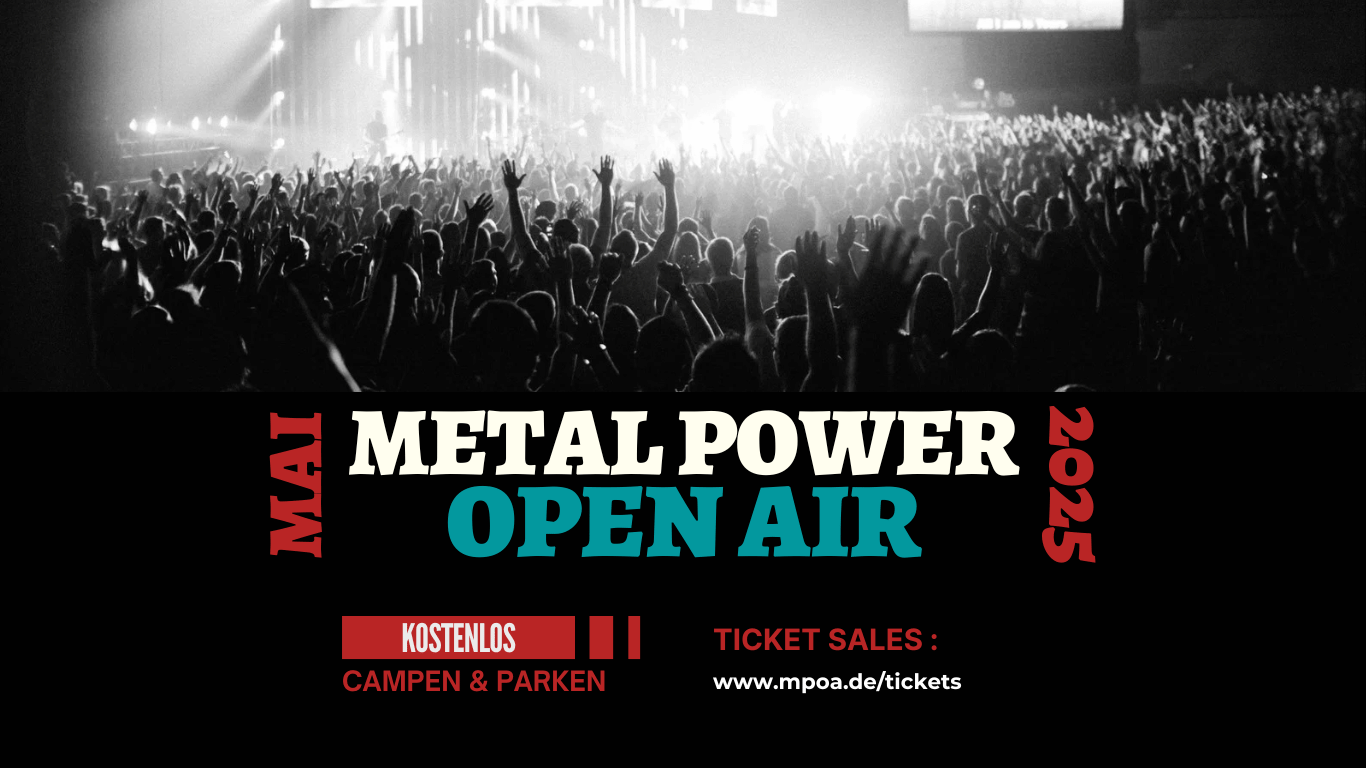Expert tips from PPE Germany GmbH – Respiratory protection equipment for mould removal. Why fragrance lamps, incense sticks or room fragrance sprays are no solution to mould infestation – In conversation with Max Leber, Managing Director of PPE Germany GmbH from Berlin.
As experts in the field of personal protective equipment, those responsible at the Berlin-based company PPE Germany GmbH also deal with the question of which respiratory protection equipment is suitable for working with mould. A musty smell creeps through the walls, ceilings, out of the floor and even thorough cleaning and airing are not enough to get rid of the smell. Feeling good is different. „Almost everyone knows about mould infestation in the flat or in basement rooms and has already had to deal with it,“ explains Max Leber, Managing Director of Berliner PPE Germany GmbH. As soon as mould is discovered, it should definitely be removed properly and respiratory protection is mandatory. Mould is not only ugly, but also poses a health hazard due to the spores and mycotoxins it releases, warns the Berlin Ministry for Environmental Protection.
The time-honoured spring cleaning brings many a nasty surprise to light. In cold corners, behind cupboards and shelves or on mattresses, unwelcome fungi have developed that make rooms smell. Now it’s not just a matter of covering up the smell with good-smelling cleaning agents, fragrance lamps, incense or room scent sprays, but of finding the cause, identifying it and taking long-term remedial action! But only with respiratory protection through a certified FFP mask, advises the Ministry of the Environment. „Especially in the case of mould, wearing respiratory protection masks is indispensable to protect one’s own health,“ confirms Max Leber, adding that when dealing with mould spores of any kind, whether on walls or on food, a respiratory protection mask of protection class FFP3 must be worn.
Remove mould immediately
In case of mould infestation, react immediately, as the spores should not spread and mould is considered a dangerous pollutant. For this reason, protective equipment is essential. During removal and treatment, tiny spores escape into the air and these could be inhaled, which is why mould removal should not be done without adequate respiratory equipment, suitable gloves and protective goggles.
„With mould, not just any mask will do as respiratory protection,“ Max Leber points out. As a rule, the spores of the different types of mould are very small and persistent. A high-quality mask of protection class FFP3 offers protection. „In special cases, the respiratory masks should also have an exhalation valve and activated carbon filter, because spores can get through the smallest opening,“ says Leber. Because mould spores fly into the air through processing, they are not only a danger to the respiratory tract, but also to the eyes, which is why a final pair of protective goggles, similar to a diving mask, is necessary. Suitable gloves protect against the spores penetrating the skin. „In any case, after processing and removing mould, the protective equipment and clothing should be disposed of.
Mask use
When wearing respiratory protective equipment, mask handling should be done professionally and checked regularly. „Decisive for the protective effect is the total leakage. This is made up of the filter permeability and the so-called fitting leakage, which is caused by leaks between the sealing line of the mask and the face of the wearer. According to DIN EN 149, both properties of FFP masks are tested,“ explains Max Leber. Effective protection requires correct handling:
- The mask should not be worn under the nose, but should fit closely to the face.
- The retaining straps must be stable and evenly fastened.
- The mask should not be pulled under the chin, as this creates a gap between the mask and the lower jaw.
- A respirator should only be used once, especially in the case of mould and asbestos, where multiple use can seriously endanger health.
Another important consideration when using respirators is proper removal and disposal. When removing the mask, hold it from behind by the retaining straps, never touching the outside of the mask. Dispose of the used mask in accordance with regional disposal regulations to prevent further release of harmful substances.

Quality and safety of respirators
As a mask manufacturer in Germany, PPE Germany GmbH places the highest value on quality and compliance with legal requirements in the manufacture of its products. For example, the masks are regularly tested for functionality, leak tightness and safety. Max Leber points out that respirators and other protective equipment must be regularly tested for functionality, leak tightness and safety.
„Overall, the correct use of respirators is indispensable for one’s own safety,“ says Max Leber. Correct use, professional handling and compliance with legal requirements are crucial for the effectiveness of the products, which have been manufactured by experts. Especially in the case of mould, effective protection is necessary to minimise the risk of health hazards.
V.i.S.d.P.:
Max Leber
Managing Director and Sales
PPE Germany GmbH
Contact:
PPE Germany GmbH
Mertensstr. 63-115
13587 Berlin
Germany
Tel: +49 30 202366380
Email: anfrage@ppegermany.de
Web: https://ppegermany.de
Contact: Max Leber, GF and Sales
Press contact:
PPE Germany GmbH
Mertensstr. 63-115
13587 Berlin
Germany
Phone: +49 30 202366380
Mail: presse@ppegermany.de
Web: https://ppegermany.de
Company Description:
PPE Germany GmbH, based in Berlin, are specialists in respiratory protection Made in Germany. PPE Germany is one of the major European mask producers for high quality FFP2 masks and started production in 2020 to ensure the supply of protective equipment to the population. PPE Germany protects the health of people who have to work and live in complicated air conditions, for example viral contamination, hospital germ contamination, bacterial contamination, dust, fibres (e.g. from mineral wool), industrial fumes, fine dust. All PPE Germany products are certified and subject to the strictest testing standards. More information at: https://ppegermany.de
FAQs:
-
How often should a respirator be replaced?
A respirator should only be used once and then disposed of. Multiple use can seriously endanger health. Therefore, it is advisable to always have a sufficient number of masks on hand to ensure regular use.
-
How should a respirator mask be put on properly?
It is important to put the mask on professionally and check it regularly to ensure that it fits tightly to the face and protects you from harmful substances. The mask should fit snugly against your face and be fastened evenly with sturdy retaining straps. The mask should not be worn under the chin as this creates a gap between the mask and the lower jaw.
-
What is the best respirator for asbestos?
For asbestos, an FFP3 dust mask with an appropriate seal that meets the requirements of EN 149:2001 is recommended. This type of mask protects against fine dusts, smoke particles and liquid and solid aerosols. It is important that the mask has been manufactured by an expert and is regularly tested for functionality, tightness and safety.





